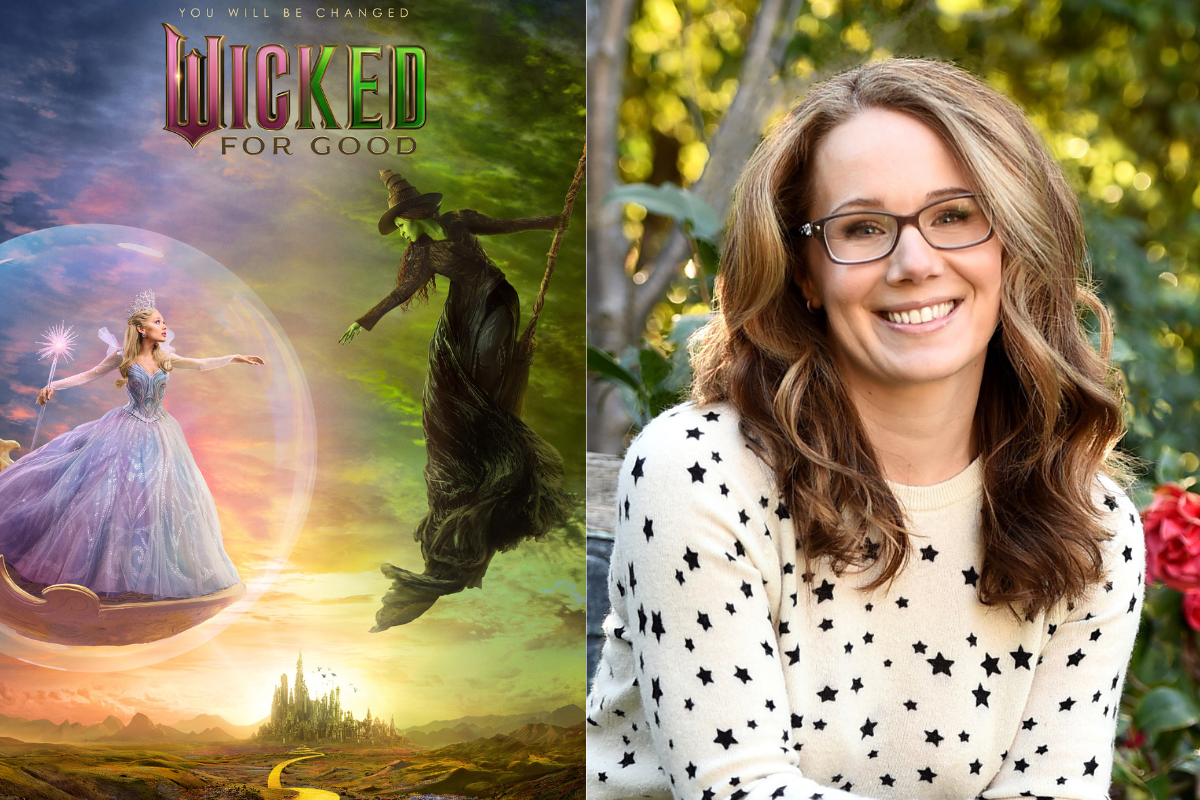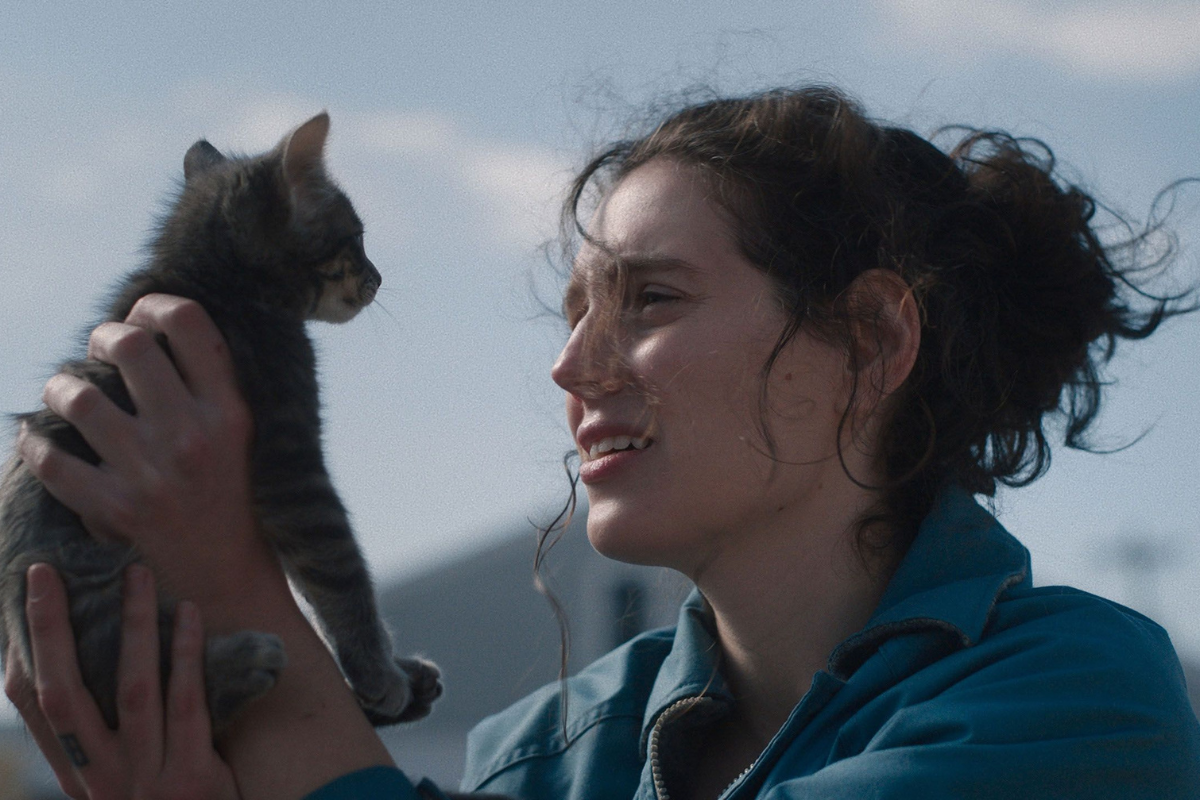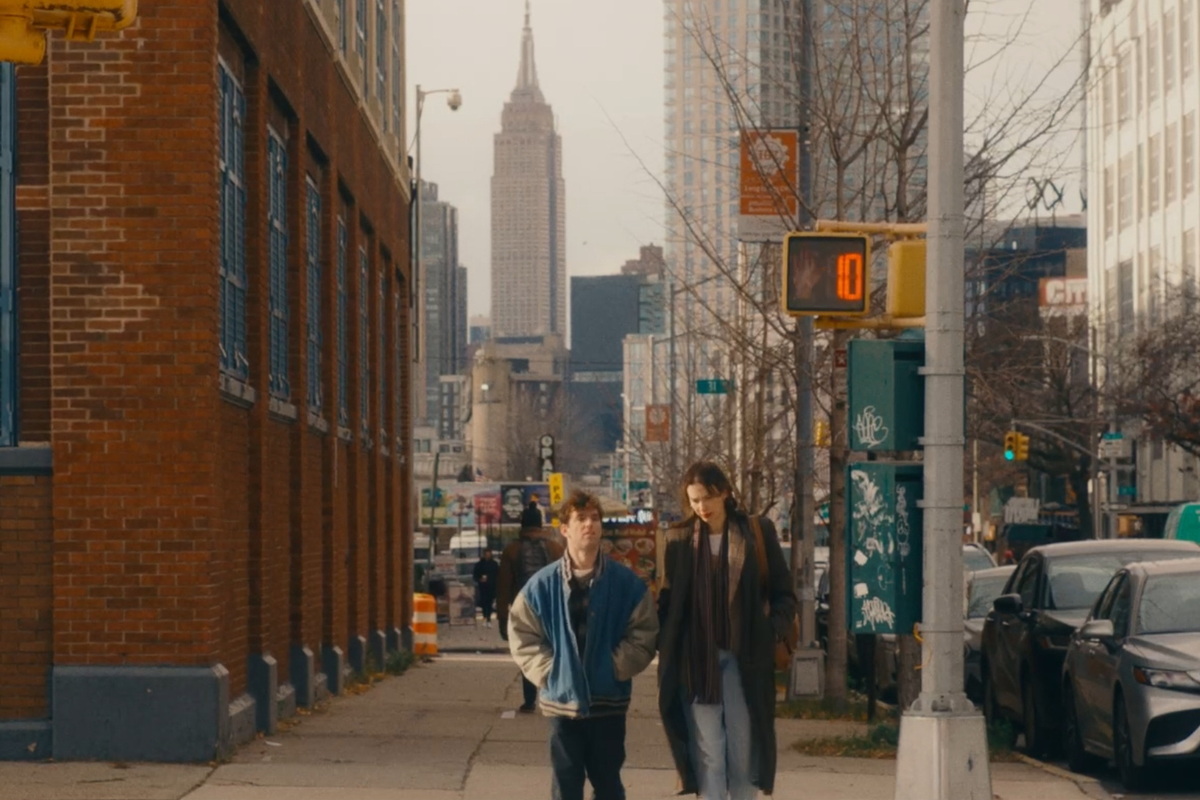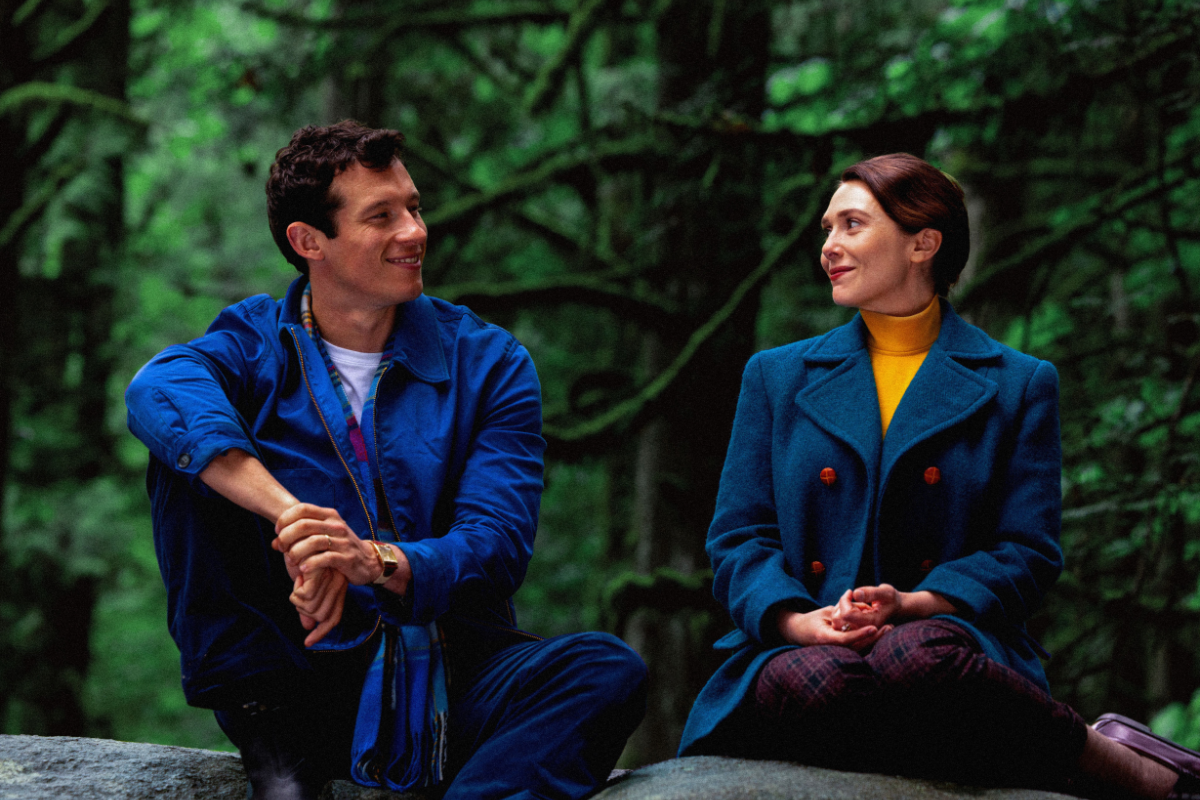The Relentless Restless Creative: A Conversation with ‘Jim Henson: Idea Man’ Documentary Writer Mark Monroe
Mark Monore talks about how he initially came on board the documentary, their approach to framing the story, tapping into his emotional connection to Jim Henson’s story, the importance of the collaborative process in documentary filmmaking, and more.
Jim Henson: Idea Man takes us into the mind of this singular creative visionary, from his early years puppeteering on local television to the worldwide success of Sesame Street, The Muppet Show, and beyond. Academy Award-winning filmmaker Ron Howard captures Henson's restless creativity, ambition, and artistic evolution in the style and spirit of his complex subject, an artist who revolutionized television, inspired generations, and created some of the world’s most beloved characters. Featuring new interviews with Henson's closest collaborators and children, as well as never-before-seen materials from his personal archives—including home movies, photographs, sketches, and diaries— Howard brings us an entertaining and insightful look at a man whose boundless imagination changed the world.
If you need an extra dose of inspiration or pep in your creative step - Jim Henson's creative journey is a great place to settle in. While his career was monumental and his imagination out of this world - he created and left behind an evergreen legacy. The key creative team behind the film, director Ron Howard and writer Mark Monroe, approached Jim's story with utmost care and respect, while also having a little fun of their own - which shines on screen.
Mark Monore recently spoke with Script about how he initially came on board the documentary, their approach to framing the story, tapping into his emotional connection to Jim's story, the importance of the collaborative process in documentary filmmaking, and more.
This interview has been edited for content and clarity.
Sadie Dean: I’d love to talk about the genesis of this project and how you initially became involved. Was it something that you were kicking around, or that Ron Howard and team came to you to write this?
Mark Monroe: It wasn't something that I originated or came up with. And in my career, I do very little kind of originating. I love to work with people. I love to not pitch. [laughs] I like to know that there's a home...that the work you put in over several years is going to be seen. And I'm very fortunate, I've been able to work with a lot of great people. This time, like a lot of times, my phone rang, and it was Justin Wilkes, great producer at Imagine who I've worked with for many, many years on several projects. And he told me that they had been talking to the Henson family and that this was going to go - I kind of got invited into the inner circle, largely because Ron and myself and one of my partners, Paul Crowder, we've had some really good success in Docs in recent years. And so, it was kind of like, ‘let's get the band back together.’ Let's do it again.
Sadie: In terms of your approach to the story and framing this, I wonder how much of that Orson Welles interview really helped frame the first and second act of the story and how you guys were going to approach and streamline Jim's story?
Mark: Yeah, it was key. And that's one of the things, you're not sure what archive exists when you first start out, but you know a lot of the story points or a lot of the aspects. And there were a couple of pieces of archive - that's one of them that did some tremendous work for us in terms of framing the film. I always knew, from the very beginning, after kind of talking with Ron and talking with the Henson children, that there was a great irony at play here, the fact that he himself...I, myself, kind of stumbled into my career. I think a lot of people stumble into their career. They maybe aren’t born thinking that I'm going to do that for a living, and that was the case with Jim. And I could identify with that. So, the fact that the most famous puppeteer, probably in the history of the world, never played with a puppet, didn't think about puppets, wasn't obsessed with puppets as a child, I found that fascinating.
And I think a lot of these stories, we're looking for high contrast, high dynamic kind of feelings, not just visuals, not just the composing and things like that. And some of it is the storytelling. And to have that as a pivot right, to really hook an audience and to make them lean in and go, 'What? That doesn't make any sense.' Is a key aspect to the whole thing. So, when that archive came in, I knew we wanted to do that. We just didn't know the tool we would use to do it. And when we found, of course, Orson Welles, of all people making that point, it was fantastic.
Sadie: That perfectly segues into my next question, with your own emotional connection to not only Jim Henson, but also his overall story, and how he's touched so many lives, as an innovator, and so forth, but for documentarians say or really for any narrative storytelling, you want to have that emotional connection to the thing. It's really easier or it's really hard to either step away from your emotional connection to something or really lean into it. And I'm just curious about your process of really dialing into all that while also making it have that emotional propulsion.
Mark: I believe in a couple of things, and personally, I'm a crier, I'm an introvert. I'm not a showy crier, but I am an internal weepy person. I can watch a well-done Jeep commercial, and still kind of well up just a little bit. And I use that as a kind of barometer in many ways I feel, because I'm in my own head a lot of times, and I'm trying to make sure that the overall train is going down the track that we all want it to go down. But I'm just one piece, one part of the puzzle, right? And so, I rely on my partners to be on the same wavelength as me. And part of me checking that is getting the scenes, visually just watching it late at night and getting emotional. I just think that's the best barometer if I'm getting emotional. I know the story, and I've seen it many, many times, that it's probably working on some level for a lot of people.
That's how I think about these things, it's not just, emotions like sadness, it's a lot of things like surprise, or joy, or anger, a lot of those things. You try to watch these things with new eyes, and it's very hard to do, but that's one of the things that is a barometer for me, is my emotional state throughout the process.
Sadie: And it works so well on this. Working with Ron and his direction, his vision, and was there a thematic anchor that you guys were following as your North Star? Something that I kind of got from this was the idea of time for Jim, but I'm curious what that was for you?
Mark: The time thing was maybe not as pronounced as it became in the film, it was a given, because we know the outcome. We know that he's headed towards an unfortunate kind of early death that seems like he's been cheated, and we've been cheated. And so, there's already the knowledge that you're doing that. The way I like to work, I think the way most people like to work is to talk. And we did have a lot of conversations, initially, before getting the research, before kind of understanding everything, kind of our own personal memories. Ron had met Jim before - didn't have any in-depth kind of relationship with him or anything - but he had actually been face-to-face with his personality in a candid way. And so, you're just trying to take it all in.
And then, of course, we had an unbelievable relationship with the family, and we had many long conversations. One of the most important moments of this whole thing was before we ever even started. We went down to the Henson studios because Lisa [Henson] and Brian [Henson] in particular, wanted to show us some films of gems that were outside of the very popular material that we're all familiar with. It wasn't the Muppet stuff, it was stuff he had done as a very young man, as an experimental filmmaker, really. And that was incredibly influential, because we're watching stuff that was done with analog tools by a very young man that is incredibly well crafted. [laughs] And we have the benefit of the digital world, we can make those things now so much easier, and so seeing that really brought home this kind of restless creative beyond the world of puppets, this guy who wanted to just unburden himself of all the ideas he has in his head at any time.
And so, we had a couple of driving forces. One was this, as Ron put it, this restless creativeness, right, relentless restlessness in terms of the creative output. And the other that I think we can only learn from knowing the story more was this kind of chip on the shoulder aspect of Jim, in terms of being looked at as only one thing. He had great success with things that entertain children, and he wanted so much more to entertain everyone. And so, I think there was, as we talked about, every time he got political capital from success, he’d spin it in ways that maybe we would not have. He put it towards something that broadened his appeal, rather than narrowed it to the thing that he had success in. And those two things were really, at the outset, the driving force of trying to frame the film and how we were going to do it.
I think the third aspect that really came to the fore during the making the film was the influence of his wife, Jane [Henson], and how that elevated all the storylines. If we could get that right, that really made time, creativeness, the pioneering aspect, the feeling of being boxed in - her relationship with him, enhanced all of those storylines dramatically. When you have an early death and you have people who you have loved in life, that you have spent your life with, you know there's emotion attached to that. But it was not until we got some of the interviews, and we did some of the interviews that we really understood the power of that dynamic.
Sadie: I've spoken with many documentarians who wear all the hats and are doing everything, but this is more of a collaborative effort on this film particularly. How much were you helping tee up the questions for the interviews and making sure ‘these are the things we want to make sure that all the kids are touching on and Frank's touching on, etc.’?
Mark: It is a total collaborative effort. I want to make that very clear. Imagine as a team, researchers, support staff, and then of course, the producers. So, it is a team effort in terms of that. I think my role is more prior to the interviews, I'm writing a couple different things, kind of a creative document that says intent, in a broad way. The previous discussion we just had, I'm laying out the restless relentless creative the chip on the shoulder, the influence of Jane. I'm writing, and this is through conversations with Ron, with the family, with the editors Paul [Crowder] and Sierra [Neal], there's a story producer, Dane [Charbeneau], who's amazing. We're talking about all this, and I'm trying to memorialize it right, so that we all understand what we want to do, right?
The other document that helps a lot and is part of the big process, I just call it a story map. People use it for all forms of creation, but I'm trying to frame the film that we want to make in a three-act structure, very kind of detailed in terms of the scenes and what the audience is going to get from those scenes, what the information drop is, what the turns are, the act one turn, the act two turn. And I'm trying to put that on paper before we even begin, so that we have ammunition in terms of knowing we have to ask questions around these things. When we look at the people we want to interview, we need to make sure we were hitting all the beats. Who's going to take this section of the film? Certainly, the children may be able to speak on all of it so could Frank [Oz].
When you understand the kind of the frame of the story that you're trying to tell, then you can be a lot more surgical in terms of who you talk to, and you can make sure you're, for lack of a better term, covering your ass by asking people about specific moments that you want to bring out in the story. So, I didn't write all the questions or anything like that, but I contributed to those questions. We had an email thread that's going around about what's important, what do we need to do? What do we have to get done? And where we think characters, subjects can be employed, right in very specific ways in the film.
Sadie: With the process of making documentaries, there seems to be that one interview with a person that says something that's so profound, and you're like, ‘Oh my God, I didn't even think of this. And now this changes everything.’ Or maybe just a small section in the second act, whatever it is. Did you guys ever bump across that?
Mark: Maybe not in major revelatory ways about an event in Jim's life. But certainly, when we finished, one of the first interviews we did was with Frank, and when we finished that, we thought ‘film!’ [laughs] - as a filmmaker himself, and as also someone so personally invested in the story, he was dramatic without being overly dramatic. [laughs] He was authentic in a very endearing, personal way, across a lot of the film. And so, at a certain point, even early on, we were like, we actually have to pull him out because we're deluding him in some way. We're stealing the power of him, because he can say so many things across the entire film. That's how intertwined a big chunk of his life was with Jim.
His input in the film, beyond what you see in the film was very informative. I mean, I'm the luckiest guy in the world in many ways, on all these films, because we spoke to Frank for three and a half hours. The film is only 100 minutes long, or whatever. I'm the benefit of a lot more information as are the rest of the creative team, because we get to shape the film based on the full experience of Frank, not just a sound bite here, a sound bite here, a sound bite here. It's more like confirming what we think the story is with each interview.
Sadie: I could totally see that too with Frank. I just keep thinking of that last moment with him, ‘What would you say to Jim if he were here right now?’ and he's fully himself and then he turns and, it's pretty sentimental. There is deep love there. And I think that's what's so great about this documentary, as well as with a lot of your work that I've seen, is that you have a way of finding that love story, whatever it may be with all your subjects. And there's just a great respect for the subject that you're covering and exploring, and I just really appreciate that.
Mark: I appreciate that. A lot of thought is given to the people who populate these films. And when I work with people on these films, I want everyone in the film to kind of earn their way into the film and to have knowledge that the rest of us could never have, to have an experience that the rest of us could never have. I think our stock and trade-in documentaries is authenticity. And when you just kind of trot people out without explaining their relationship to the story, I think it takes away. Personally, I think every decision has a consequence. You're either helping the film or you're taking it back, right? Or you're removing the audience from being able to be close to the film, right? There's no neutral kind of decision in my mind.
So, I'm always trying to figure out how to make the films feel like narrative films, make you feel the emotions you feel when you go to a great narrative film. These people are our actors, right? And I love the art form, and I love, I love the documentary space, and I love the filmmakers who have made some very special films where you don't see the talking head, as they call them. But personally, I want to see them. I'm moved by them. I prefer seeing the humanity of the person telling you about the best day or the worst day, or the memory that haunts them, or the love that they still have. I want to see their faces. And that's just me. And I know a lot of people don't like that [laughs] and that's fine. There's a big tent right now for documentaries, so all good, but I prefer to see 'em.
Jim Henson: Idea Man is now available to watch on Disney+.
Sadie Dean is the Editor of Script Magazine and writes the screenwriting column, Take Two, for Writer’s Digest print magazine. She is also the co-host of the Reckless Creatives podcast. Sadie is a writer and filmmaker based in Los Angeles, and received her Master of Fine Arts in Screenwriting from The American Film Institute. She has been serving the screenwriting community for nearly a decade by providing resources, contests, consulting, events, and education for writers across the globe. Sadie is an accomplished writer herself, in which she has been optioned, written on spec, and has had her work produced. Additionally, she was a 2nd rounder in the Sundance Screenwriting Lab and has been nominated for The Humanitas Prize for a TV spec with her writing partner. Sadie has also served as a Script Supervisor on projects for WB, TBS and AwesomenessTV, as well as many independent productions. She has also produced music videos, short films and a feature documentary. Sadie is also a proud member of Women in Film.
Follow Sadie and her musings on Twitter @SadieKDean







